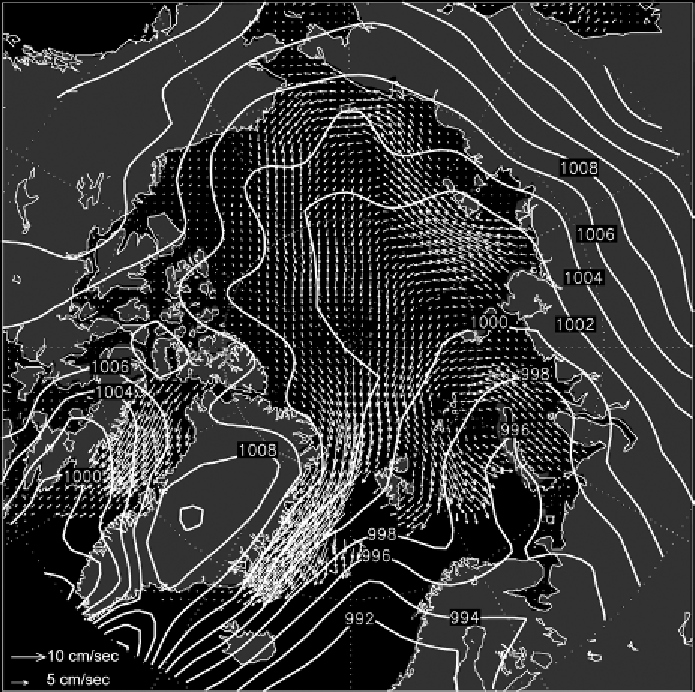Geoscience Reference
In-Depth Information
Figure 7.13.
Mean pattern of sea ice drift in the Arctic for January 1989, based on
SSM/I retrievals with overlay of sea level pressure from NCEP/NCAR (ice drift field
courtesy of C. Fowler, University of Colorado, Boulder, CO, sea level pressure field by
the authors).
along the floe boundaries or larger ice aggregations. Put differently, the field is
inherently non-differentiable. If we calculate from IABP or SSM/I velocity fields
that an area of the pack ice is converging, this is interpreted as an aggregate closing
of the pack ice over some length scale much larger (tens to hundreds of km) than
the typical distance between floes. If the ice concentration is less than 100 percent,
the aggregate closing is seen as a regional increase in ice concentration. If the con-
centration is 100 percent, the aggregate closing implies the development of ridges
and keels, increasing the ice thickness. Locally, however, the motion could be non-
divergent. Divergent flow calculated over some length scale is interpreted similarly.
The aggregate opening is seen as a decrease in the regional ice concentration, even
though the motion could be locally nondivergent or convergent. Similarly, in an area
of large-scale shear only, there can be local opening, closing, and the development

